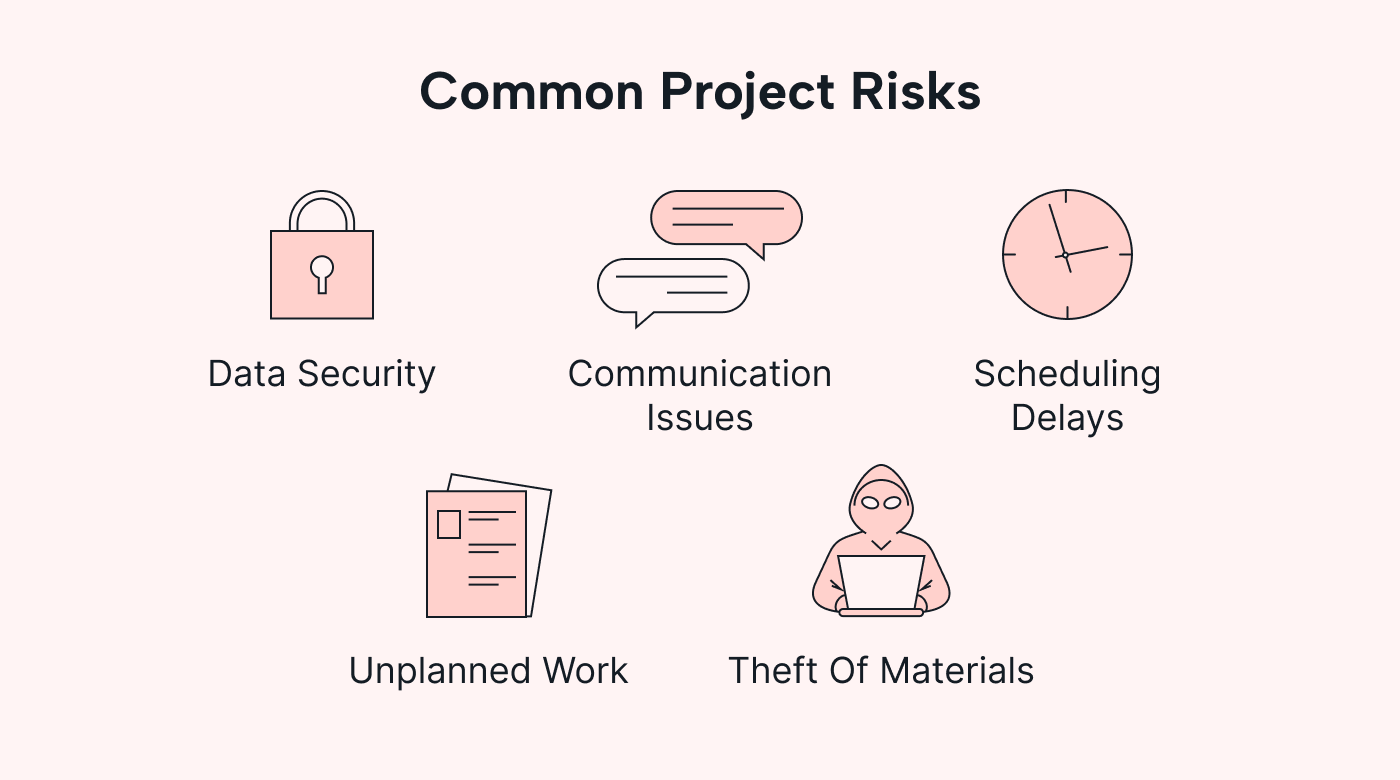The secret to a successful project lies in knowing what you want to achieve, how long it’ll take, how much it’ll cost, and how to do it. To understand all of that, you must go through a detailed project planning exercise.
The first step of that process is to figure out the project scope, which is how you define what it is that you want to achieve. Let's consider the example of installing a new off-the-shelf IT system. In that case, your project scope would be something like:
- Specify and configure the new system
- Import data from the old system
- Go live with the new system.
That project scope is what lets you determine the other answers: How long it’ll take, how much it’ll cost, and how to make it happen. And this is where project estimation comes in. You expect the project to provide a return on investment.
Why is project estimation important?
Stakeholders also expect results from any given project. In particular, they want to know if a project’s expected cost is acceptable before investing. A project estimate helps them to make that decision because it gives them a good idea of how much time, effort, and money will be needed to get the project to a successful conclusion.
An estimate also helps a project manager keep a project running smoothly. You can spot potential stumbling blocks down the road by measuring the time, money, and resources used on every task. This allows you to take corrective action before it becomes a problem.
When to do project estimation?
Before a project can get underway, you need a project plan. But before you can do that, you need both a scope and a project estimate. But which one comes first? The estimate or the scope? It’s a bit of a chicken-and-egg situation.
You need a detailed scope to accurately estimate the resources, time, and money required for the project. But, without an estimate, finalizing the project’s scope isn’t easy. The result is that you need to develop them together, but you must begin with a very broad scope.
Who does project estimation?
That depends on the size of the project management team. It could be the project manager, a project administrator, or a whole team in the project management office (PMO). But whoever takes charge of the project estimation process can’t operate in a vacuum.
 |
They’ll need to reach out to individual project team members to learn how long they’ll need and what resources they require to complete each task in the project. This makes project estimation a team exercise.
6 things to estimate
The simple definition of the project estimation process is that it’s an assessment of the scope of a project, how long it’ll take, and how much it’ll cost. And that’s just the beginning because there are other factors that you must also consider: risks, resources, and quality.
But these elements can’t be considered in isolation. They’re interlinked. For example, reducing the time available for a task will reduce the cost. However, that can increase the risks by putting pressure on the scope, resources, and quality of the project outcome. They need to be balanced for the project to succeed.
Scope
If we look back at our new IT system example, the initial scope was:
- Specify and configure the new system
- Import data from old system
- Go live with the new system.
To do an accurate estimation, you need to break down each of these elements into individual tasks. Let’s take a look at the first bullet. We’d meet with the main users of the new system to understand what they want. We’d also meet with the technical team to understand how long it’d take and what it’d cost to meet those requirements.
That'll usually lead to some back-and-forth as we trim the initial requirements to reduce costs and the timeline. Eventually, we'll have a good estimate for the first bullet and could move on to the others.
Costs
The cost of a project consists of fixed and variable costs. The fixed costs for our new IT system are the computer hardware, software, and licenses required by the new system.
The team members who must get it all working must be paid. And technical project people are usually billed (or expensed) by the hour. Similarly, there will be costs associated with training those who must use the new system.
There’s often an additional cost involved for those being trained: While they’re away from their desks, their normal day-to-day work isn’t being done. They either need to be paid overtime, or a contractor must be brought in to cover them. These are all variable costs.
Time
It seems simple — the number of hours, days, weeks, or months to complete the project. But time is also money; most projects have a desired completion date. Our example might illustrate this if it needed to be up and running a month before the company’s fiscal year-end.
We’d have to look for ways to get it done faster than might be considered ideal. To do that, we could schedule some tasks to be tackled in parallel. But that may require additional resources, with a knock-on effect on cost, scope, and quality. It could also add to the project’s potential risks.
Risks
When running a project, a risk is anything that you didn’t expect to happen and impacts the project. How you manage project risks is to try to anticipate anything that might happen to upset your plans.
Most project managers do this with a risk assessment matrix, which allows them to visually plot the risks and evaluate the danger to the project goals.
Resources
Your team members are your resources. So are the laptops and equipment they use to do their jobs. Project managers must always ensure they have the right people working on the right job.
It’s about matching the skills and abilities of your team members to the tasks that need to be completed. It’s also about ensuring they have everything else they might need.
Quality
It can be very difficult to define quality. Therefore, technical people tend to test everything rigorously to ensure they deliver a solid, workable solution. But, if your stakeholders aren’t happy with the result, it’s a failed project even if you delivered it on time and under the project budget.
It’s just as tricky when you’re estimating quality. Any estimates you make will also affect your project cost, time, scope, risks, and resources. And you must always remember that the customer or project owner always makes the final judgment on quality.
7 project estimation techniques
In smaller projects, all you really need to consider is the Triple Constraint. Also known as the project management triangle, it's where you'd worry mainly about scope, cost, and time.
But if your project is too big or too complicated for that approach to work, there are 7 more advanced estimation techniques you could use. Each of these estimation techniques gives you a different way to estimate cost and time, based on scope. They'll help you extract the information you'll need to make an accurate project estimate — one that'll help you get approval for your project and then manage it effectively.
Top-down estimation
We’d probably consider this technique for the new IT system example because it’s useful when you’re given a fixed or preferred project end date. Your first task is then to define a target project timeline.
Working backward from the go-live date, you can break it down into smaller chunks and tasks to complete within the allotted time frame. If you hit time constraints along the way, you could bring in additional resources or schedule different teams to complete tasks concurrently.
Bottom-up estimate
As the name suggests, this technique is the opposite of the top-down approach. With bottom-up estimating, you’ll determine effort and resources, assess how long each task will take, define dependencies, and arrive at a final project completion date that way. You can take a similar approach to estimating costs.
It’s a useful technique when there is no predefined deadline or other time pressure to complete the project. For example, if a customer has asked for a job and wants to know approximately how long it’ll take.
Analogous estimating
Sometimes, it’s easier to use data collected from previous projects to guide your estimations. Returning to our new IT system example, you could use a similar project you did somewhere else in the business or for another customer.
 |
Using actual data collected on that project or even more than one other project, you can arrive at a reasonably accurate estimate for your current project. That’s the technique we call analogous estimation.
Parametric technique
This technique has been described as a more detailed approach to analogous estimating. Parametric estimating also involves using past project data, but you can take it further by adjusting that data to reflect the differences between the projects.
It’s an approach commonly used in the construction industry. Imagine a business that builds houses. If you took the total cost of all past projects and divided that by the total square footage of those projects, you’d get an average cost per square foot. You can then use that to multiply by the planned area of any new project to arrive at a good estimate.
Three-point estimation
This approach is similar to the technique scenario planners use to come up with their high-road, middle-road, and low-road forecasts. Rather than assigning only one duration for each task, you'd provide three: optimistic, expected, and pessimistic.
Your estimate comes from calculating the average of those numbers. PERT estimates are a useful tool to combine with this three-point estimating technique because they allow you to calculate a weighted average rather than a simple one.
What-if analysis
When tackling a project in a field that’s completely new to you or you need to get buy-in from your stakeholders, a what-if analysis may work for you. The mechanism you use is one or more estimation workshops involving stakeholders and members of your project team.
Everyone offers insight and the benefit of their experience, and the project estimation process jointly arrives at an estimate. You might break the team and the work down into smaller work packages on complex projects. Each package is estimated, and then all are combined for an overall estimate for the entire project. You might even use this technique to develop estimates for multiple scenarios.
Expert judgment
The simplest and most popular technique for estimating projects is to rely on the experience and gut feel of those who have done it before. Expert judgment most often comes from the project managers or the project team.
But now and then, consulting external parties with experience in the type of project you’re contemplating is necessary. It’s a method of calculating a project cost estimate and duration that can be used together with the other techniques listed here.
Choosing the best technique for you
Which of these techniques you choose will depend on the particular project you have in mind. And what kinds of projects your company performs. The goals and objectives of your project stakeholders will also influence it, as well as when the resources you need will be available to you.
Generally, however, it’s probably best to use a process of elimination to figure out which is best for this project. For example, if it’s a type of project you’ve done before and you know inside out, you’d probably go with the expert judgment technique or analogous estimating. But if the project is in a completely new field to you, you might eliminate that technique upfront.
Bringing Motion into the mix
Whichever technique you decide to use on your next project, you’ll need an effective way to manage the project schedule and allocation of tasks. You’ll need an intuitive interface to break your project into manageable tasks and assign them to team members.
And that’s where Motion’s AI-powered project manager and calendar app can be most helpful. The automated scheduling feature ensures tasks are assigned based on priority, resource availability, task dependencies and target deadlines.
Motion will integrate project and non-project work and use its intelligent algorithms to serve them up on your team’s calendars. If circumstances change, for example, new meetings or urgent tasks, it will automatically reschedule for you. And, if it finds that a target deadline can’t be met, it will notify you. You can even use Siri to schedule activities for you.
Use Motion to share task updates, in addition to scheduling and tracking progress. Why not give it a whirl now? Try Motion’s 7-day free trial today to see how it can help you deliver your projects on time and within budget.

After 40-odd years of working in technology, project management, media, and marketing, Brian's career and growth journey has exposed him to a wide range of niches. He brings this breadth of knowledge and expertise in his content work through enriched storytelling and original concepts that make SaaS content engaging and accessible for readers of all stripes.






